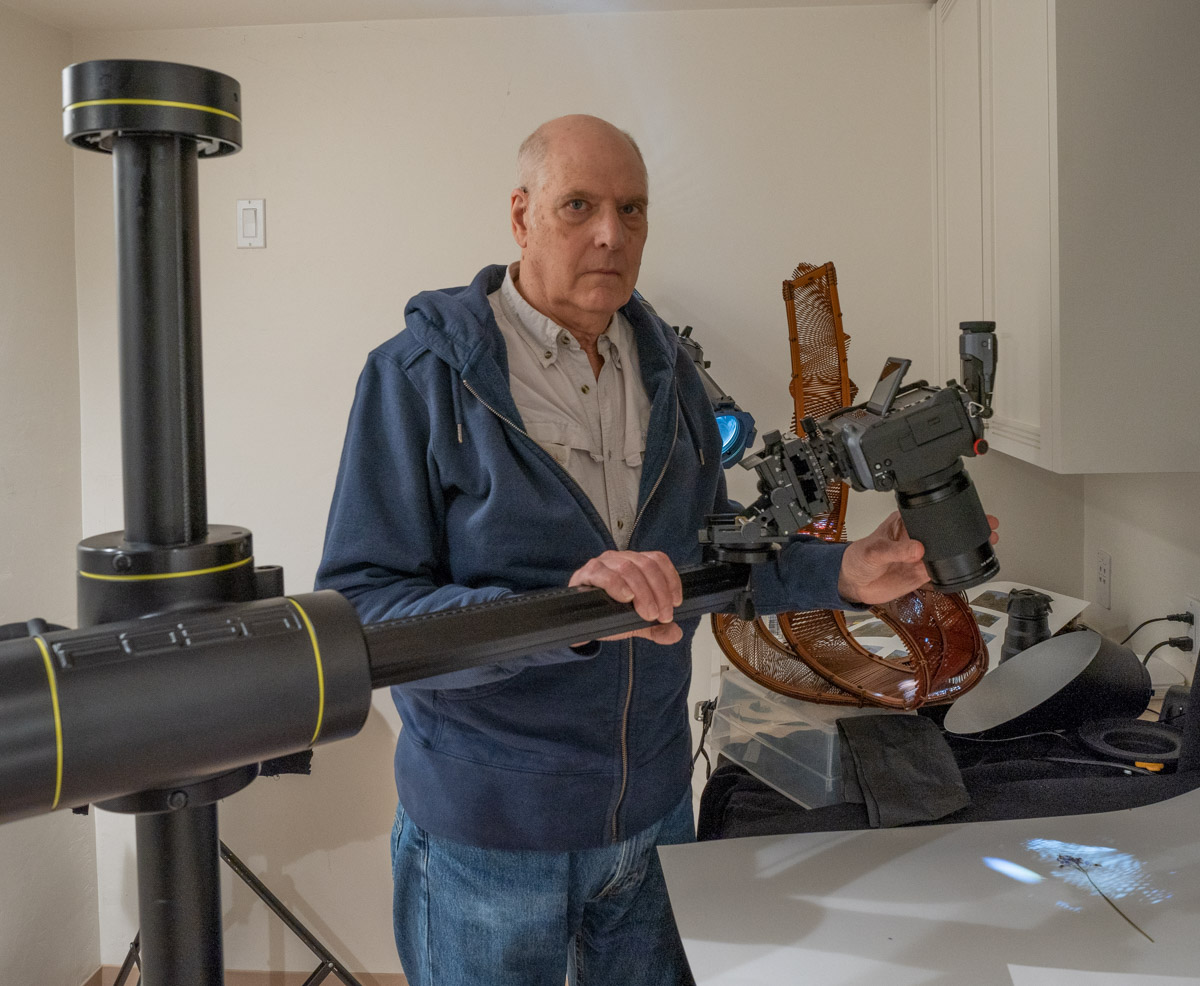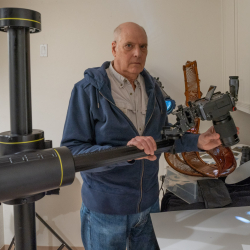Home > Topics > Site and Board Matters > New Article Announcements & Discussions > Do The Numbers Matter?
Do The Numbers Matter?
-
AuthorTopic: Do The Numbers Matter? Read 803 Times
-
New Article Announcements & Discussionson: April 10, 2020 at 4:50 pm
Mark Segal is back with another deep technical article. The article is short but has a link to a large downloadable file (PDF). We thought it would be easier for you to download the PDF so you can read it at your own pace or better yet print it out. Mark explains a lot and with good illustrations about how he does his research. It’s technical but you’ll understand things regarding testing a lot better. I recommend it. You can view the article with download HERE
Kevin Raber
Owner and Publisher of photoPXLRe: Do The Numbers Matter?Reply #1 on: April 10, 2020 at 6:11 pmMark,
Just downloaded and digging in! Thank you. Hope you’re open to “dumb questions” from the “numbers-impaired.?” (That’s supposed to be amusing, sort of. 🙂 )
Rand
Rand Scott Adams Rand47
Re: Do The Numbers Matter?Reply #2 on: April 11, 2020 at 10:25 amWow! What a lot of work you went through, Mark. Since you are working in a color space that is not perceptually uniform (even though that is its intent), you might consider the sizes and orientations of the MacAdam ellipses in that space near your patch values. You might even want to create a set of such ellipses for your own personal eye-brain system, and compare them to MacAdam’s and others’. In all of this, managing viewer adaptation is critical, and, unfortunately, tricky.
Jim
Re: Do The Numbers Matter?Reply #3 on: April 11, 2020 at 11:51 amHi Rand – always open to questions and questioning – that’s the whole point.
Hi Jim – thanks for the suggestion. I shall look into it. Not sure exactly how to build those ellipses, so if you have any instruction on that, most appreciated.
Re: Do The Numbers Matter?Reply #4 on: April 11, 2020 at 3:10 pmMark, if you’re talking about making your own personal ellipse set, the original experiments were performed at constant luminance. From Wikipedia:
MacAdam set up an experiment in which a trained observer viewed two different colors, at a fixed luminance of about 48 cd/m. One of the colors (the “test” color) was fixed, but the other was adjustable by the observer, and the observer was asked to adjust that color until it matched the test color. This match was, of course, not perfect, since the human eye, like any other instrument, has limited accuracy. It was found by MacAdam, however, that all of the matches made by the observer fell into an ellipse on the CIE 1931 chromaticity diagram. The measurements were made at 25 points on the chromaticity diagram, and it was found that the size and orientation of the ellipses on the diagram varied widely depending on the test color.
The experiments have been extended to three dimensions:
A more general concept is that of “discrimination ellipsoids” in the entire three-dimensional color space, which would include the ability of an observer to discriminate between two different luminances of the same color. Such measurements were carried out, among others, by Brown and MacAdam in 1949, Davidson in 1951, and by Wyszecki and Fielder in 1971. It was found that the discrimination ellipsoids yielded relatively unchanging discrimination ellipses in chromaticity space for luminances between 3 and 30 cd/m.
Jim
-
This reply was modified 4 years, 3 months ago by
 Jim Kasson.
Jim Kasson.
Re: Do The Numbers Matter?Reply #5 on: April 11, 2020 at 3:33 pmRight, Jim, thanks – did the same look-up. I may have to be my own “trained observer” if I were to attempt this, could be fun. But now that he and others have done it, I suppose as far as those ellipses go, we kind of know the answers. I may be wanting at some point (it’s time consuming) to carry this work into another dimension, essentially taking up where the article ended, looking at small colour differences as bigger or smaller components of much larger real photos to see how they appear. I have a sense that the smaller the space a colour consumes on a sheet of paper and the larger the surrounding photo, the less consequential a smallish variance would appear and conversely, the larger the presence of the colour, the more obvious and therefore the more careful one needs to be that monitor and printer cohere. Not any time soon though. There will be some review items coming up that I shall need to focus on as higher priority.
Re: Do The Numbers Matter?Reply #6 on: April 12, 2020 at 9:41 amI have a sense that the smaller the space a colour consumes on a sheet of paper and the larger the surrounding photo, the less consequential a smallish variance would appear and conversely, the larger the presence of the colour, the more obvious and therefore the more careful one needs to be that monitor and printer cohere.
It should be true that the smaller the space a color occupies on the paper, the less influence it will have in viewer adaptation. But there are nonlinear effects like those that Land demonstrated with the Retinex work.
-
This reply was modified 4 years, 3 months ago by
 Jim Kasson.
Jim Kasson.
Re: Do The Numbers Matter?Reply #7 on: April 12, 2020 at 10:28 amThank-you Jim. I shall tuck this away for future reference if I decide to do more on it.
Re: Do The Numbers Matter?Reply #8 on: April 12, 2020 at 4:21 pmThe question posed reminds me of a quote from the information theorists Richard Hamming: “The purpose of (scientific) computing is insight, not numbers.” He didn’t mean the numbers are not important. Rather we must always keep in mind, and keep asking ourselves, what the numbers mean. I downloaded your paper and I look forward to this deep dive.
JSS
Re: Do The Numbers Matter?Reply #9 on: April 12, 2020 at 4:42 pmHi John, As implied by the title of the piece, that indeed was the purpose of this little exploration – looking at what measurements of dE values mean visually.
Re: Do The Numbers Matter?Reply #10 on: April 13, 2020 at 10:13 amAs implied by the title of the piece, that indeed was the purpose of this little exploration – looking at what measurements of dE values mean visually.
Mark, you mentioned spatial effects. There is much that is unknown about spatial effects in color perception, but the general frequency responses are understood:
https://blog.kasson.com/the-last-word/contrast-sensitivity-vs-spatial-frequency/
https://blog.kasson.com/the-last-word/chromaticity-csfs/
https://blog.kasson.com/the-last-word/contrast-sensitivity-functions-and-photography/
https://blog.kasson.com/the-last-word/contrast-sensitivity-functions-and-the-bayer-array/
If you want to introduce spatial effects into your calculations and experiments, that’s probably a good place to start.
Jim
Re: Do The Numbers Matter?Reply #11 on: April 13, 2020 at 10:32 amOK, many thanks Jim. Much appreciated. I shall hang-on to those references and consult when the time comes.
-
This reply was modified 4 years, 3 months ago by
-
AuthorPosts
- You must be logged in to reply to this topic.






